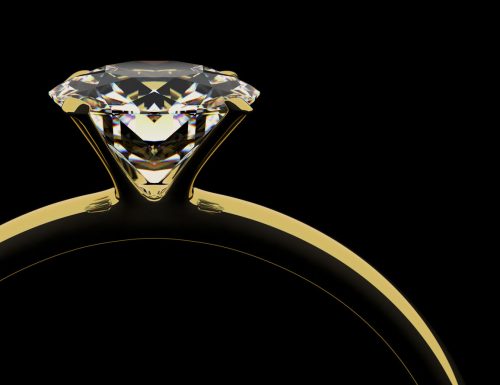The following commentary first appeared in the May 18 edition of The Compass, newspaper of the Diocese of Green Bay, Wisconsin.
Summertime is for weddings. So much goes into preparing for a wedding, and one of the biggest expenses is the engagement ring. And most engagement rings contain diamonds.
How many brides-to-be know where their diamond came from? Africa, Russia, Australia?
According to the U.S. Geological Survey’s Mineral Commodity Summary, the top three diamond producers in the world are Russia, Botswana and Canada. Among the other top producers are sub-Saharan African nations including Namibia, Angola, Congo and South Africa.

In April, the second largest uncut diamond ever discovered was mined in Botswana. Called “Lesedi la Rona” (“our light” in Tswana, one of Botswana’s official languages), it is an 1,109-carat diamond. The largest diamond ever discovered was the Cullinan, discovered in South Africa in 1905.

Diamonds are beautiful. Diamonds have an ancient history and mystique. But diamonds also have a history of violence, which is why they are sometimes called “blood diamonds,” or “conflict diamonds.”
For example, Angola’s civil war, which lasted for more than 27 years, was funded in part by diamonds mined in Angola and sold for weapons by Angolan rebels, according to the United Nations’ Fowler Report. Those diamonds went to jewelry dealers in Africa and Europe.
Diamond workers have suffered abuse and often been kept in conditions akin to slavery. Human rights groups have reported that children younger than 12 work in some African mines. Amnesty International released a report last fall documenting the diamond trade in Central African Republic, claiming that the government there fails to check whether the diamonds finance armed groups that rape, loot and execute the country’s citizens.
In 2003, the Kimberley Process — an initiative to stem the flow of conflict diamonds — was set up by the United Nations. Based on its 2000 Fowler Report, documenting mine abuse, the Kimberley Process’ goal has been to prevent conflict diamonds from entering the mainstream diamond market.
Enrollment in the initiative is open to countries willing and able to implement its requirements. As of 2013, it had 54 participants, representing 81 countries, including the United States, with the European Union’s 28 member states counted as a single participant.
Kimberley Process members account for approximately 99.8 percent of the global production of rough diamonds. However, that is still a lot of diamonds unaccounted for, and there is some question if all Kimberley Process members are as thorough as they need to be.
More people are becoming aware of using ethically mined diamonds. Various jewelers, including Tiffany and Co., offer ethically produced gems. (Tiffany has also discontinued making coral jewelry since it was recently discovered that the world’s coral reefs are being depleted.)
Another U.S. company, Brilliant Earth, began in 2005 with the purpose of “cultivating a more humane jewelry industry.” It started when co-founder Beth Gerstein became engaged and wanted to find a conflict-free ring. This spring, Brilliant Earth was part of the first Solidarity Festival held at Vincentian-run St. John’s University in New York. The company pledges to donate 5 percent of its profits toward diamond mining education, environmental restoration and economic development.
Many other jewelry companies use ethically mined gold, silver and platinum or recycled metals in their jewelry. Improper mining of these metals can cause arsenic, mercury and cyanide — used in the extraction process — to be released into ground water.
So when you prepare to buy that special diamond — whether for a wedding, anniversary or even a graduation — take some time for research. Find out where that diamond or gold came from. Most major companies now explain their acquisition process on their websites or in the store. If they don’t, find someone else. There is enough information out there today to make an ethical, as well as a dazzlingly, choice.
Patricia Kasten is associate editor of The Compass.






















